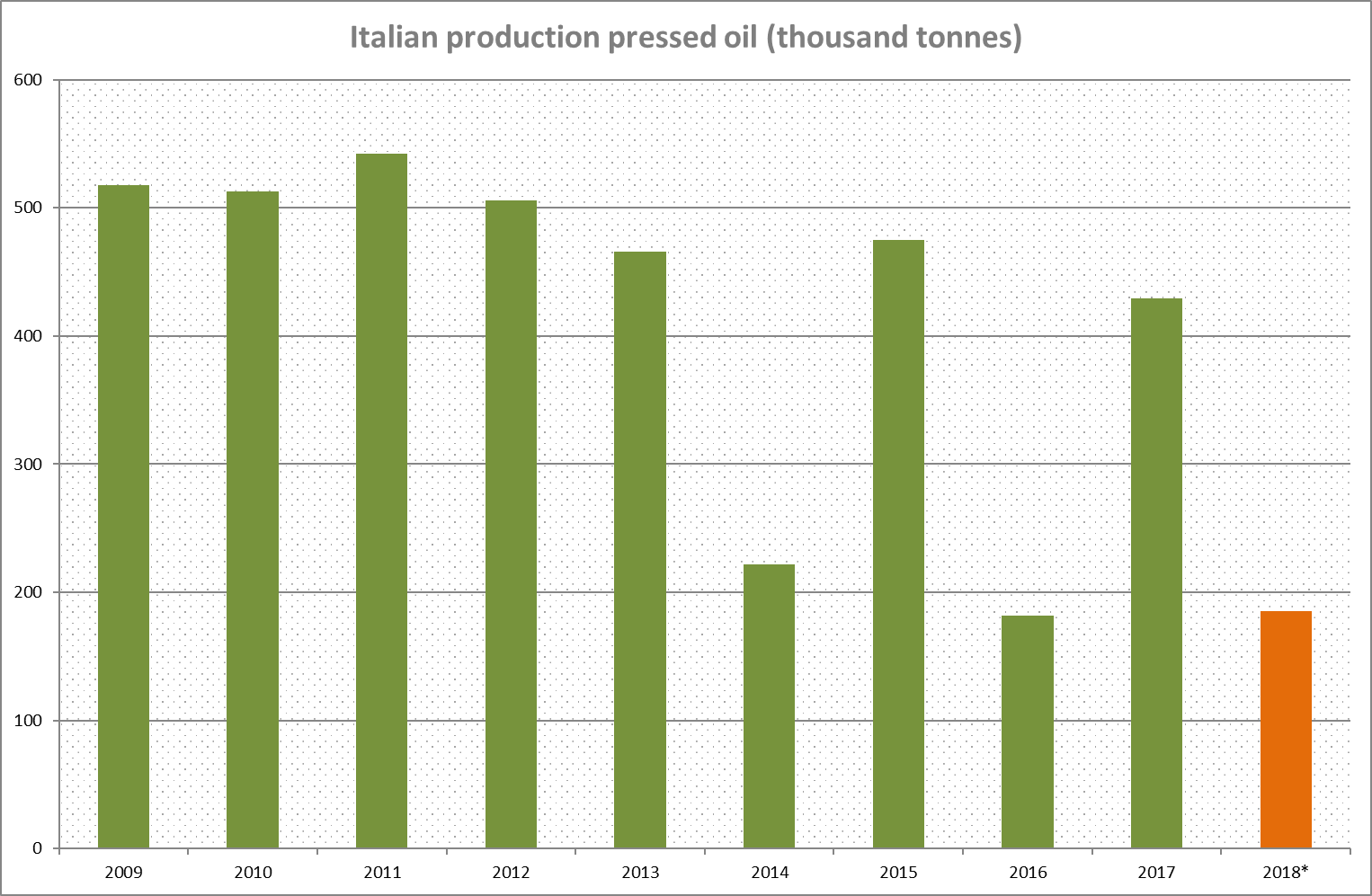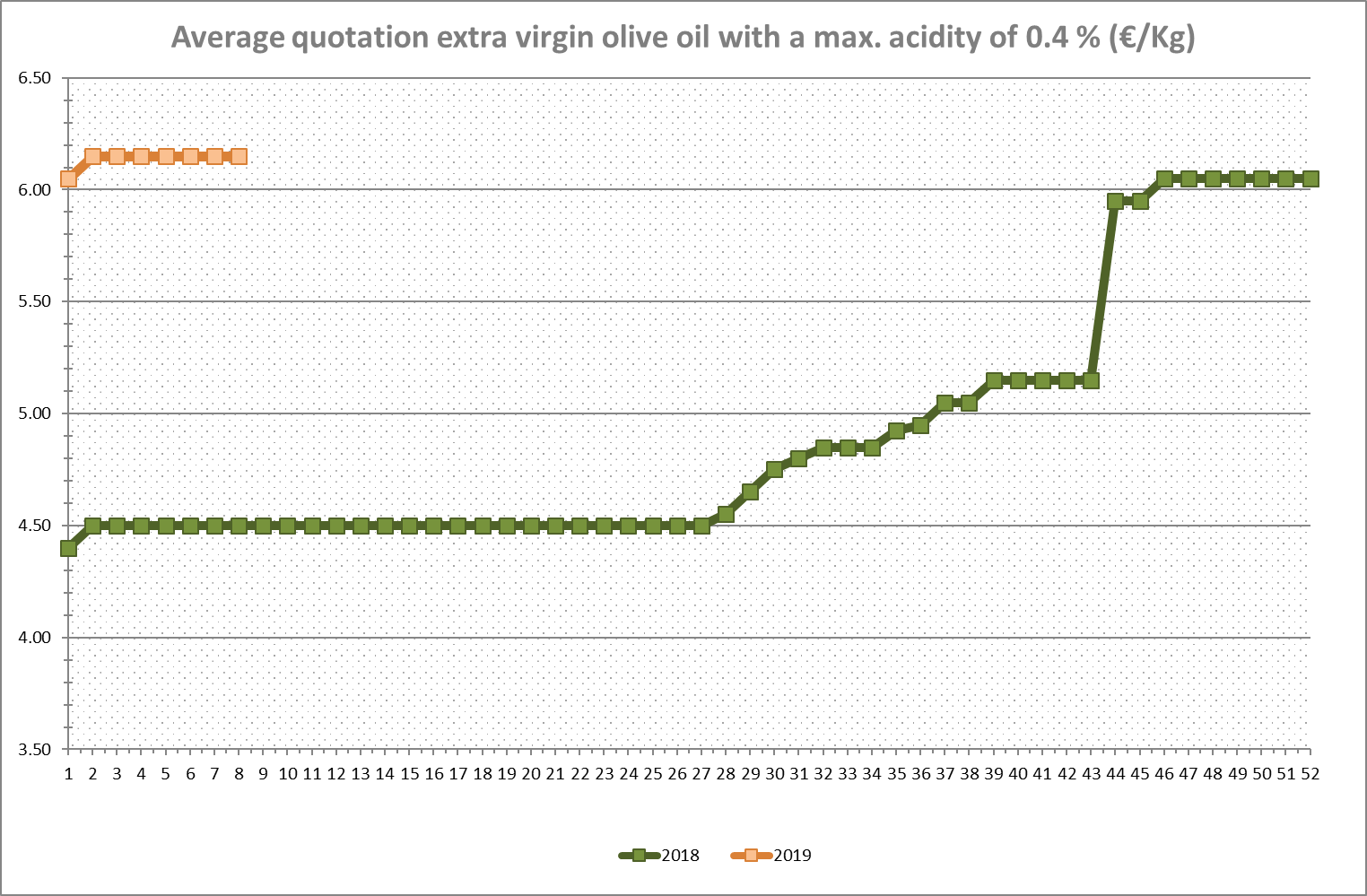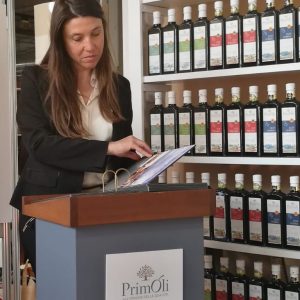Based on the indications provided by producers, this year ISMEA estimates Italian production of olive oil will be as low as 185,000 tonnes (- 57% compared to last year), making 2018 one of the worst harvests ever.

One of the main causes for such a negative outcome is the situation in the southern regions of Italy, responsible for over 80% of the total national production.
The negative yield of this year’s crop stems not only from alternate bearing, but also from the heavy frosts that in the late months of 2017 hit a large olive producing area in the northern part of Puglia, as well as from repeated olive fly attacks favoured by the hot and humid weather in September and October.
ISMEA also found that in the last 6 years, this is the third time that low fruit bearing years show negative peaks that appear to be beyond what is considered a physiological alternate bearing.
With regards to prices, the heavy drop in production has caused a slight rise in market quotations: in the latest listings, the average quotation on the Bari Commodity Exchange for extra virgin olive oil with acidity below 0.4% was equal to € 6.15

Here is an article published by ISMEA:
One of the worst years ever for the national olive industry, with less than half the amount of olive oil produced compared to 2017 (-57%). These are the results of the last survey carried out by ISMEA during the month of December, which estimated the production of olive oil from the 2018 crop at approximately 185k tonnes, indicating an even greater drop compared to the already bleak estimate presented in October when the olive mills were still closed. Specifically, the greatest loss appears to be in the south of Italy, where the Puglia region, which alone counts for about half of the national production, registered a drop of approx. 65% due to frost and phytosanitary issues that impacted the olive groves. In the past six years – ISMEA states – this is the third time that low bearing years show a decrease in production that goes beyond normal physiological alternate bearing, and this is due to the higher frequency of adverse climatic events.
Source: Industry News by ISMEA Rome, 29 January 2019
